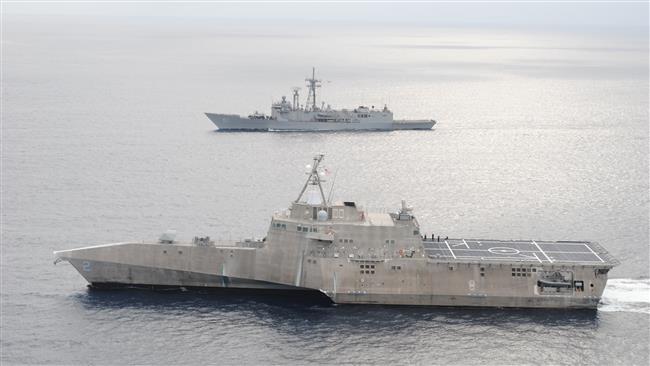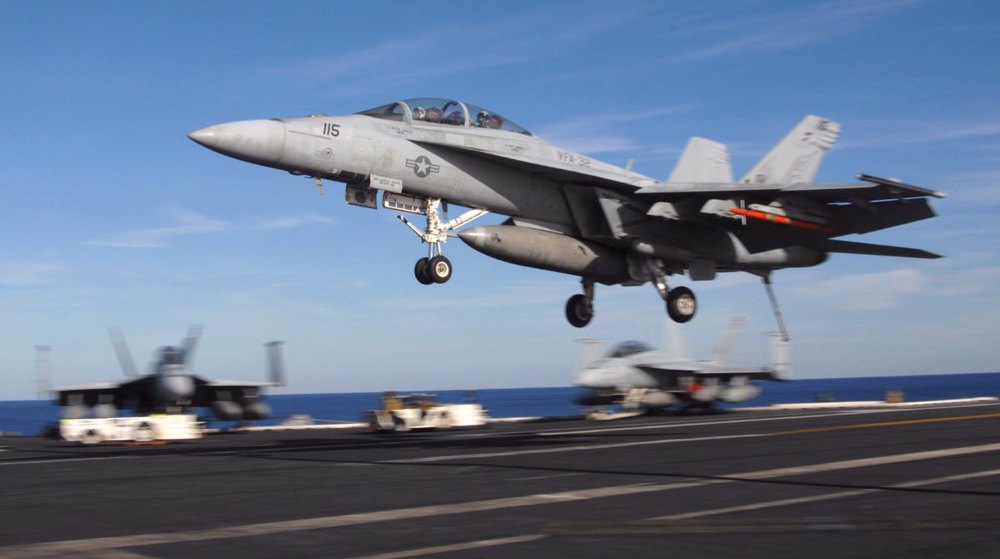US Navy considering more powerful warships
The US Navy is planning to upgrade its future frigates to make sure they can defend other ships from anti-air threats as well as enemy vessels undersea and on the surface.
The force has put together a study group called the Requirement Evaluation Team (RET) to examine how future frigates can be equipped with a local air defense system in order to protect Combat Logistics Force ships that supply warships at sea with fuel, ammunition, spare parts and food.
According to a RET draft document, the objective is to develop a frigate from the existing littoral combat ship (LCS) designs by Lockheed Martin and Austal USA.
Last year, the Navy reached the conclusion that spending billions of dollars to make faster warships under the LCS program was a strategic mistake and that the final products lacked viable firepower.
As a result, a new frigate class was designed to address the shortcomings of the LCSs by employing heavier armor plates and additional weapons.
Read More:
RET has been tasked with designing LCS-based frigates that can carry a minimum of 16 Evolved Sea Sparrow Missiles (ESSM) Block 2 missiles or make use of a Mark 41 vertical launch system that can house at least 8 Standard SM-2 missiles—one of the primary anti-air weapons used by on the Navy’s various vessels.
The challenge is that using that type of weaponry requires the addition of several new radars and a more capable command and control system.
The ships would also have the Cooperative Engagement Capability, which links sensors and weapons carried on multiple ships, aircraft or shore installations and turns them into an integrated fire control system.
The draft document stated that RET, which in addition to several Navy offices and commands includes the Joint Staff and the Pentagon’s Office of Cost Assessment and Program Evaluation, had until the end of May to provide its recommendations. The first frigate was expected to be commissioned in 2020.
So far, four of Navy’s fleet of six Littoral Combat Ships have suffered engineering or design issues. According to the General Accounting Office, the latest LCSs cost $482 million to $563 million apiece.
It was revealed in January 2016 that Saudi Arabia had rejected the Pentagon’s $4 billion offer of four frigates based on Lockheed’s LCSs.
US President Donald Trump has promised to expand the Navy as part of his efforts to build the “biggest military" in history.
VIDEO | Yemeni forces repel US-British attack, down F-18 Jet
Iran’s capabilities vast; enemy’s ‘maximum pressure’ policies all failed miserably: Senior official
Iran’s economy grew 2.7% y/y in Sep quarter: CBI
VIDEO | Freelancers in Gaza strive to stay online amid genocide
Mikati demands Israel's withdrawal from south Lebanon
Yemeni army strikes Israeli military sites with drones
‘Clock ticking’: UNRWA slams unjustifiable killing of children in Gaza
BP to be sued in Britain for supplying oil to Israel










 This makes it easy to access the Press TV website
This makes it easy to access the Press TV website